The Old West left its mark on American history as a time of lawlessness, which led to its alternative name, the Wild West.
Until the 1920s, American Frontier was a time of complete lawlessness. Robberies on trains, banks and stagecoaches were on the rise, and there were more outlaws than the police.
The U.S. border
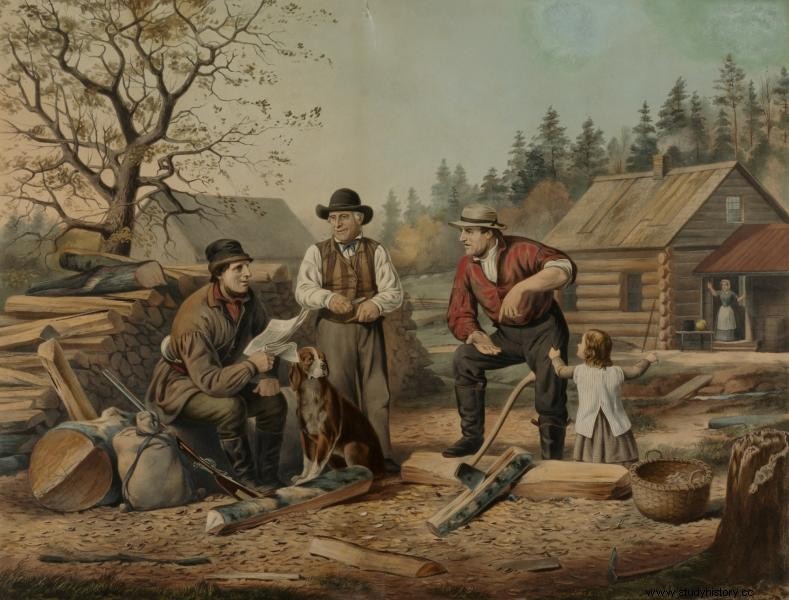
Also known as the Old West or the Wild West, American Frontier began in 1607 and ended in the 1920s.
It began when the English settled in Jamestown, Virginia, in 1607. It grew as the border moved and marked the lands the Europeans settled on.
In 1860, the American Frontier, west of the Mississippi, included the territories of Dakota, Nevada, Oregon, Utah, Montana, Arizona, California, New Mexico, and Colorado. Around the same time, settlers began to emigrate northwest on the Oregon Trail.
The origin of the Wild West
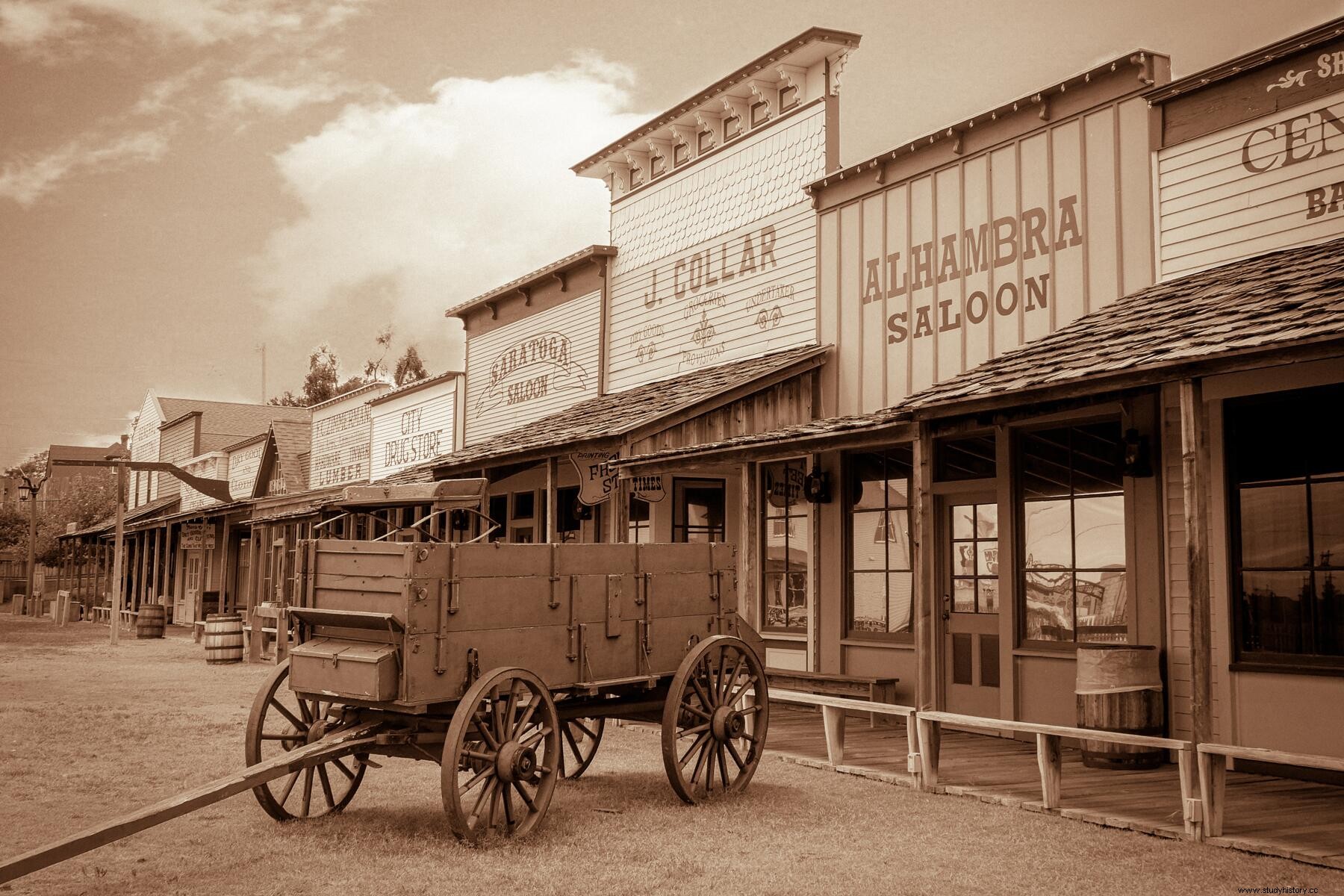
The American Frontier became the "Wild West" due to the lawlessness of the untamed territories west of the Mississippi River.
Many settlers ignored official laws and committed crimes, from horse theft and robbery to kidnappings and murders.
Reasons for the Wild West
The main contributors to the start of the Wild West were the gold rush in 1848 and the completion of the transcontinental railway.
Before the gold rush, a few settlers formed the American border. They trusted each other to survive and lived peacefully with each other.
In 1855, in California alone, the population increased to 300,000 settlers.
Gold Rush and the Transcontinental Railroad expanded the country. This made it difficult for law enforcement to take control and police in the west. It was impossible for law and order systems to match the same speed as the growing population.
Social causes referred to racist crimes. White Americans, African Americans, Plains Indians, and Chinese immigrants lived close together.
In addition, there was still conflict between ex-Confederate soldiers and ex-Union soldiers after the Civil War.
When it comes to the economy, there was a rivalry between the various economic groups, such as homeowners and farmers.
In addition, everyone in the west armed themselves with weapons. As a result, violent crimes were more likely to occur.
Gold Diggers
Due to the gold rush, gold diggers showed complete disregard for the law.
They wanted to "make a claim" on a piece of land, which meant they had the rights to all the gold found in that area.
"Claim jumping" was when miners stole the demands of other miners if they looked promising. "Salting a claim" was when miners cheated money from new prospectors. They scattered gold flakes in the country and sold it to an inexperienced prospector for a huge profit.
Mining clay was also plentiful with alcohol and prostitution, leading to violence.
In addition, prospectors came from all over the world, which resulted in high racial tensions.
Cowtown
Cities were created along the railway that were equally outlawed. They focused their efforts on cattle breeding and sales.
They hired cowboys to protect herds from mountain lions and rattlesnakes, round the herds at the end of the grazing season and drive them to railroad heads. When they were paid, the cowboys splashed in inns, salons and brothels.
This creates problems, and that's what made cowtowns tough areas to visit.
Abilene, a cowtown in Kansas, became known for his shootings, murders, gambling and prostitution. The order restored itself by the end of 1871, after law enforcement banned cowboys from entering the cowtowns.
Togran
The first train spruce occurred in 1866. The Reno gang escaped with $ 16,000.
Togran was growing after the Intercontinental Railroad was completed. It forced railway companies to act. They made express cars made entirely of steel with armed guards placed inside.
It eventually declined in the 20th century.
Gangs
Ganges from the Wild West were quite common.
They made their legendary stories famous in American history, from their robbery to their murderous robbery.
Regardless of the time of day or night, it was common for gangs to enter a salon, kill people, rob them, and walk away with no consequences.
Some members wanted a bounty placed on them, which was open for everyone to collect.
Three of the most notorious outlaws were Jesse James, Billy the Kid and Belle Starr. Outlaws were of all races, with bounties on their heads open to all.
Jesse James
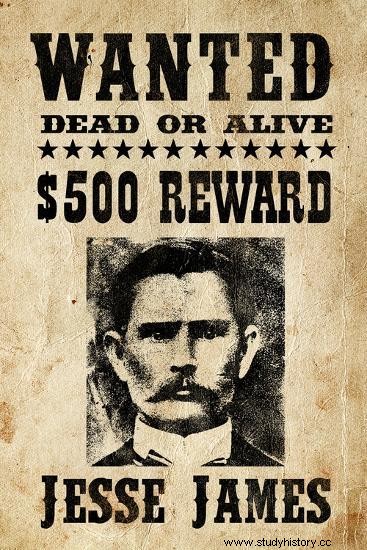
Background
The infamous outlaw was born September 5, 1847 in Clay County, Missouri, as Jesse Woodson James.
He was the third of four children, born to Robert and Zerelda Cole James. His siblings were older brother Frank James, Robert James (died in infancy) and sister Susan James.
His father was a slave-owning farmer who raised hemp and raised sheep and a popular Baptist minister.
James was a popular young man in the community and deeply religious. A good number of townspeople thought he would become a minister, like his father.
However, the Civil War brought a distinct career path to not only Jesse but also to Frank.
Civil War and Guerrilla Warfare
The James family joined Governor Claiborne Fox Johnson to support the Confederacy
Jesse and Frank joined a guerrilla unit that killed dozens of unarmed Union soldiers. They later killed and maimed over one hundred of the 39th Missouri Infantry.
At the end of the Civil War, James used his anger over the defeat to rob banks, trains and diligence.
Jesse James began his life as an outlaw.
He saw himself as a Robin Hood, robbing the politically progressive reconstructionists to feed the poor. However, there is no evidence that he gave to the poor.
Reconstruction (1865-1877) followed the Civil War. It was an attempt to reintegrate the southern states from the Confederacy and four million recently liberated people into the United States.
James-Younger Gang
James' brothers reunited with Cole Younger and his brothers, all former guerrillas, and started the James-Younger Gang.
Between 1860 and 1882, they operated from Iowa to Texas to West Virginia. The gang committed more than 20 bank robberies and train robberies, with a draw of $ 200,000. They ruthlessly murdered anyone who got in their way.
In 1881, the governor of Missouri issued a $ 10,000 bounty to capture Jesse and Frank James.
On April 3, 1882, one of his accomplices, Robert Ford, shot and killed Jesse James.
The governor found Ford guilty of murder, but pardoned him.
Billy the Kid
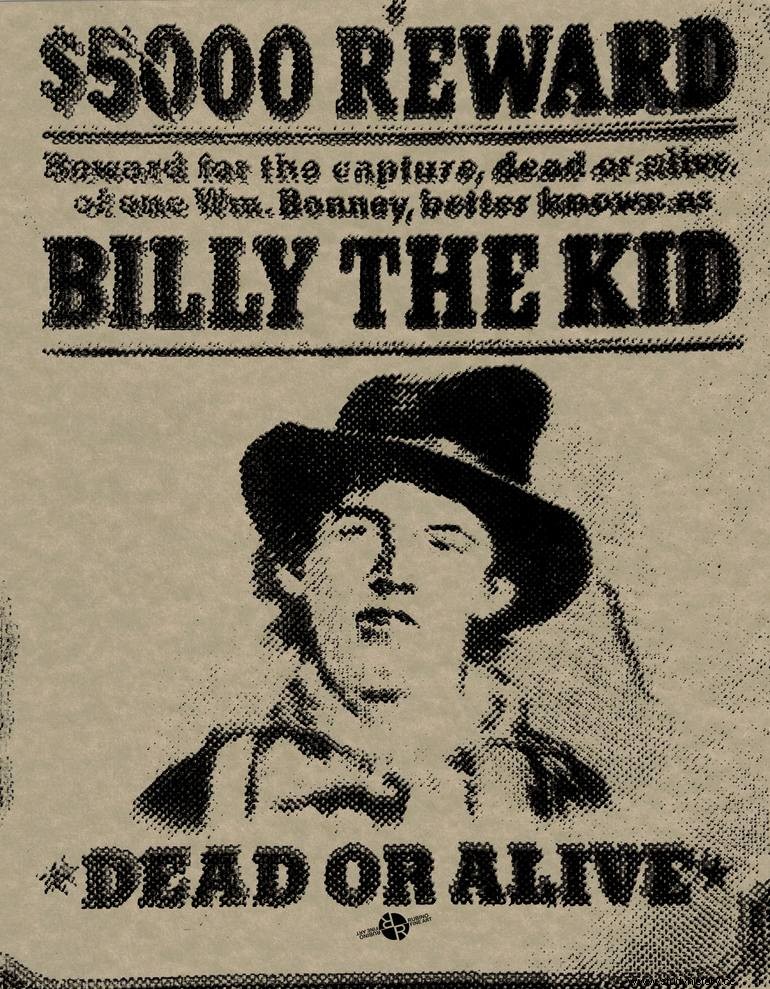
Background
William Henry Bonney was born on November 23, 1859, most likely in New York City.
We know little about the teenager's outlaws in the early days, even the names of his parents.
The story found that the family moved to Indiana, Kansas and then Denver. The father died shortly after the Civil War, about the same time as his mother contracted tuberculosis.
They eventually settled in New Mexico after his father's death, and his mother married William Antrim.
13 or 14 years old, young William lost his mother due to tuberculosis.
His stepfather showed no father's care for young William and Joseph, young Williams' half-brother. Antrim placed his sons in different foster homes and left.
A year later, young William stole clothes from a Chinese laundromat. After the arrest, he escaped from prison and fled to Arizona. There he began his outlaw journey and became known as 'The Kid' or 'Billy the Kid'.
Billy the Kid started a short career as a horse thief apprentice. He fled Arizona after killing a blacksmith who teased and abused a boy.
Lincoln County Wars
The Kid returned to New Mexico and joined a gang of rustlers and gun fighters called The Boy. They engaged in the Lincoln County War and fought on the side of James Dolan.
Eventually, The Kid left the gang to join the opposition, John Tunstall, a new friend and employer.
Violence broke out after Tunstall's death.
The murder affected Kid deeply. He claimed that he was the only man who treated him well and swore revenge on those who killed him.
Together with other supporters, more deputy armed men, they formed the "Regulators".
The Regulators
After a violent gun battle, Kid and only a handful of regulators escaped with their lives. They were dissolved. Some went into hiding to start new lives. Others joined forces to become outlaws. Billy the Kid was part of the Regulators that became.
In 1880, Billy the Kids' name spread across tabloid newspapers.
However, he was unable to settle down for long. He was on the run from old war soldiers from Lincoln County and the law. The only way he could earn a living was by rattling and playing.
In December 1880, law enforcement arrested The Kid for participating in the assassination of Sheriff Brady during the Lincoln County War. Following the sentencing, the judge sentenced The Kid to death.
Known to be an escape artist, he killed two guards on April 28, 1881 and escaped from prison.
A bounty of $ 500 was on his head.
New Mexico Sheriff Pat Garrett began the hunt for Billy the Kid. On July 14, 1881, Garrett shot and killed 21-year-old The Kid.
Legend has it he killed 21 people before his death, although the number may be closer to nine.
Belle Starr
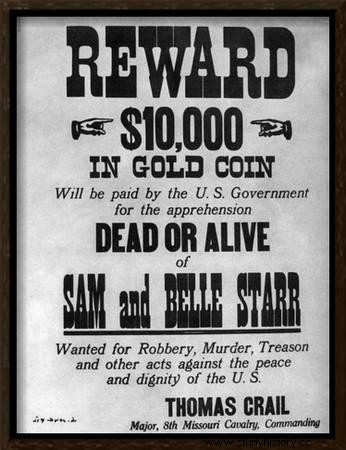
Background
Myra Belle Shirley was born on February 5, 1848 in Carthage, Missouri, to Judge John Shirley and his third wife, Elizabeth Pennington.
She had an older brother, John Allison 'Bud' Shirley, and a younger brother, Edwin Shirley. Her father was successful in growing wheat and corn and raising pigs and horses in Jasper County. It gave the family financial success.
Myra lived a pampered and rich life.
She attended Carthage Academy, and her teachers taught her music and classical languages. Overall, she was a good student with polite manners and a talent for piano. She loved the outdoors and roamed the countryside with her older brother. Bud taught her to ride a horse and fire a gun.
James-Younger Gang
In 1866, the James-Younger Gang robbed their first bank in Liberty, Missouri, of $ 16,000 in cash and bonds. She formed a bond with Cole Younger and immediately became a member of their gang.
She later met Jim Reed in 1866, whom she married and had two children with. He ran with the James-Younger Gang. However, he died in 1874 after being shot by police.
She married Bruce Younger in 1878 and then Sam Starr, a Cherokee, in 1879.
Her full name was Myra Belle Shirley Reed Starr. Her outlaw name was Belle Starr or The Bandit Queen.
She and Sam formed their own gang. They rattled, stole horses and took whiskey for the Indians. Belle Starr was the mastermind behind the operations.
The police arrested and eventually charged them with stealing snakes, for which she served time.
At their second arrest for the same crime, with her legal skills, she acquitted herself of the crime. Her husband and an Indian police officer show each other to death during the trial.
Not only was she one of the first female outlaws, but what made her widely known was her death.
Someone murdered her on February 3, 1889, 40 years old in her cabin.
Many suspected that her son, whom she had recently beaten for abusing her horse, killed her. The crime remains unsolved.
Her legacy lived on. She was truly a Robin Hood character and the leader of the most bloodthirsty cowboy band. There is no account or record that she ever stopped a train, a bank or a stagecoach or murdered anyone.
The end of the Wild West
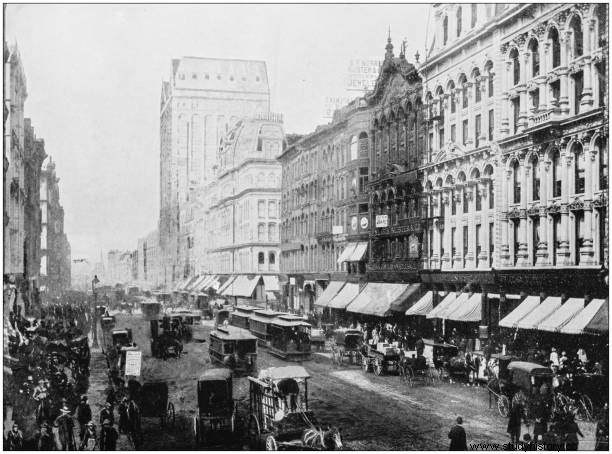
The 20th century brought the gilded age, which led to the rise of business magnates, such as Andrew Carnegie and John D. Rockefeller. Electricity and cars came into the West. Theodore Roosevelt brought an era of nationalism not seen since before the Civil War.
In addition, unions were formed to combat the mistreatment of workers. Indians found some authority in the US legal system. However, they remained placed on reservations.
In the 1910s, there were only a few remnants of the Wild West.
The modernization of law enforcement meant that the age of the outlaws was over.
America was from a nation of isolation to a coming global power. Some time later, the United States' involvement in World War I helped to form the League of Nations.
New Mexico and Arizona became the 47th and 48th states in America.
Arizona was the last of the western states to be admitted to the union, marking the end of the old west and therefore the wild west.
the conclusion

The Old West brought some of the greatest innovations to literature and film, while contributing to American history.
Not all points in the story are strictly positive. However, they talk more about the country, its history and how it has developed since then.
Mankind has not woven the web of life. We are just one thread with it. No matter what we do with the web, we do it for ourselves. All things are bound together. All things are connected.
- Seattle Chief, Suquamish and Duwamish Chief.
